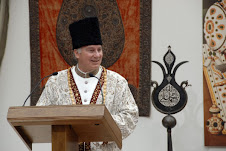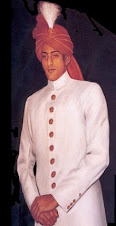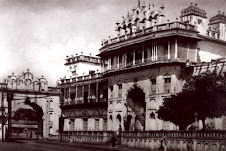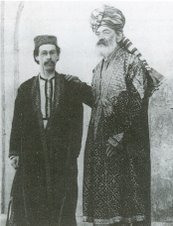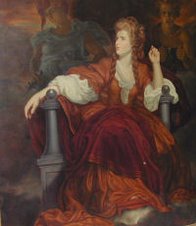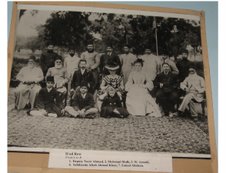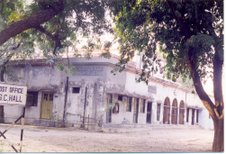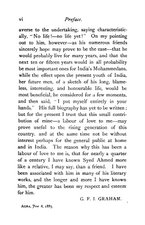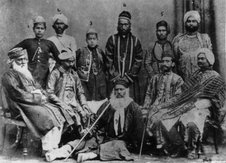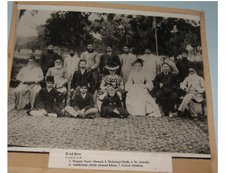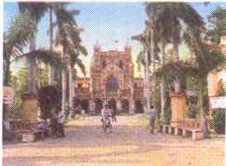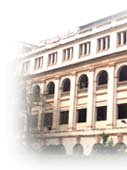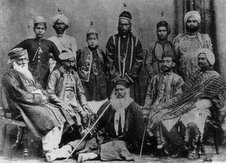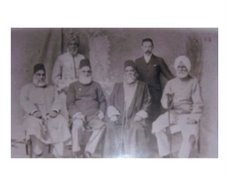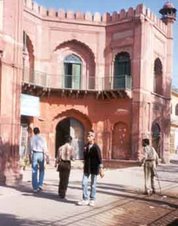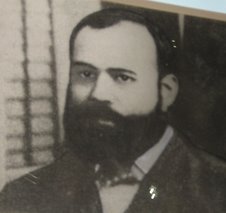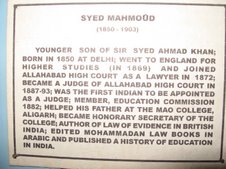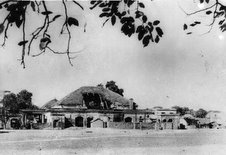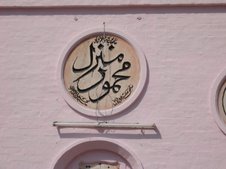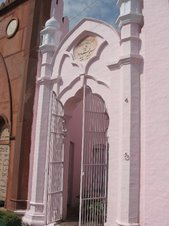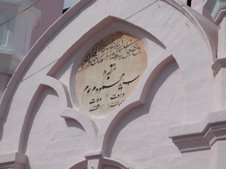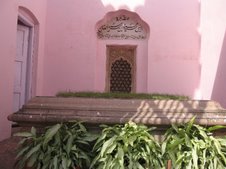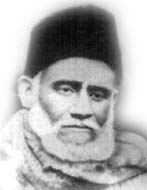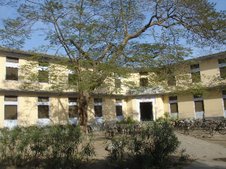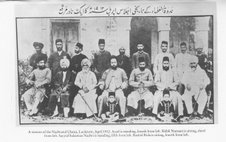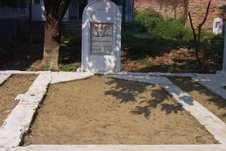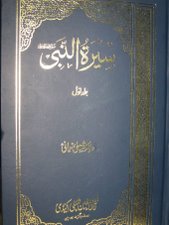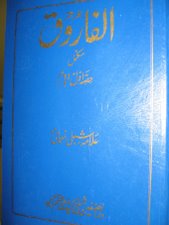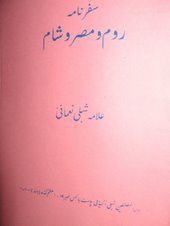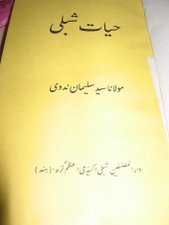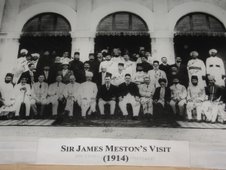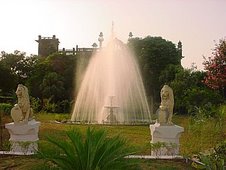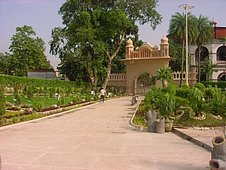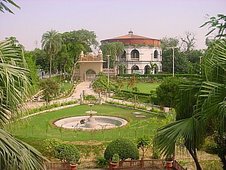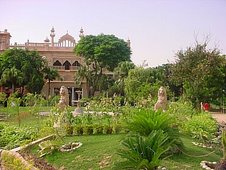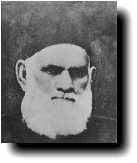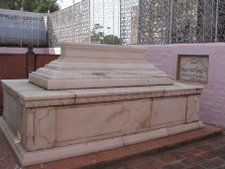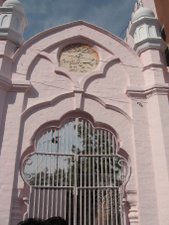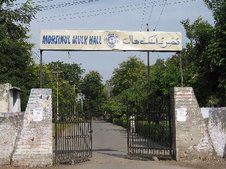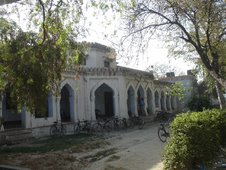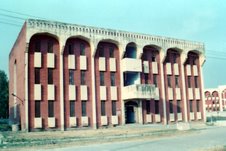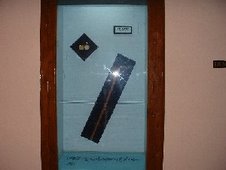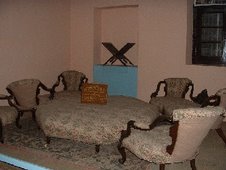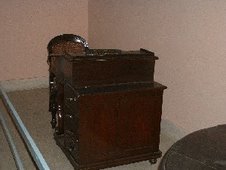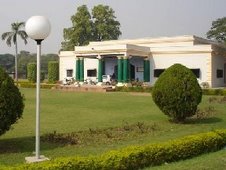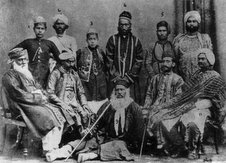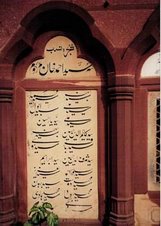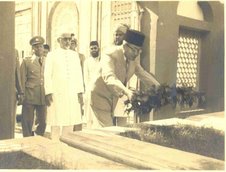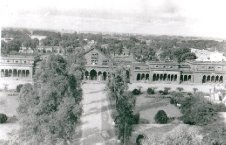Deputy Nazir Ahmad
Shamsul Ulema Maulvi Deputy Nazir Ahmad
Father’s Name: Maulvi Sa-adat Ali
Born: 1831 Bijnor (UP)
Died: 28th December 1910 (Delhi)
Biographies:
Hayatun-Nazir by Syed Iftekhar Alam Bilgrami
Maulvi Nazir Ahmad ki Kahani, Kuch Unki Kuch Meri Zabani
Father’s Name: Maulvi Sa-adat Ali
Born: 1831 Bijnor (UP)
Died: 28th December 1910 (Delhi)
Biographies:
Hayatun-Nazir by Syed Iftekhar Alam Bilgrami
Maulvi Nazir Ahmad ki Kahani, Kuch Unki Kuch Meri Zabani
by Mirza Farhatullah Beg
Maulvi Nazir Ahmad Dihlavi: Ahvaal-o-Aasar by Siddiqi, Iftikhar Ahmad
Literary Works:
Mara-tul-Uroos (A very famous Novel based on the Tarbiyat of girls)
Banatun-Naash, Taubtun-Nasooh, Ibnul Waqt, Mohsinaat, Aiyyami,
Rooya-e-Sadaqa, Fasana-e-Mubtala
The history of rise and fall of Islamic thoughts in Indian sub-continent and Aligarh Movement can never be completed without mentioning Nazir Ahmad.
Shamsul Ulema Maulvi Nazir Ahmad, popularly known as Deputy Nazir Ahmad was born in district Bijnor in western UP. He had spent his first 4 years of childhood with his father at his maternal grandfather’s place in Afzalgarh, Nageenah, Bijnor. After his maternal grandfather’s death, they moved to Bijnor. Their financial condition was not very good so his father became a private tutor and was Nazir Ahmad’s first teacher. The young Nazir Ahmad was very naughty so his father sent him to Delhi for further education in a small Arabic Madrasah in Aurangabadi Masjid close to Ajmeri Gate under Maulvi Abdul Khaliq. He faced a lot of hardship there and described his stay in this Madrasah as worst part of his life. Later he got married to the grand daughter of Maulana Abdul Khaliq. Later got admission in Delhi College, stayed there from 1845 to 1854 and completed his LLD. After completing his education started his career as a teacher in Punjab, later moved to Kanpur and then moved to Allahabad and became Deputy Inspector of School. In Allahabad he learned English and joined the team of translator who were translating Indian Penal Code from English to Urdu. After this he was appointed as Tahsildar and rose to Collector and worked in Jalone, Gorakhpur and Azamgarh. Deputy Nazir Ahmad was not very happy with the course material of schools so he decided to develop his own for his daughter Sakeenah. His intention was to make the course material interesting and useful. Later his work became very popular among the girls students and his course material resulted in a very famous novel Mara-tul-Uroos, a training guide for girls.
Association with Sir Syed and Aligarh Movement:
In 1877 on Sir Syed’s recommendation Mohsinul Mulk, who was working in Hyderabad state recommended Deputy Nazir Ahmad for Director (Administration) in the state. He was in Hyderabad state for a while and retired from there and moved back to his home in Delhi. He was a very good orator and Sir Syed used to take him to each Muhammadan Education Conference as Keynote Speaker. He was an ardent supporter of Sir Syed and Aligarh Movement and became a close Associate of Sir Syed. He wrote few poems in praise of Sir Syed. He was fully convinced about the role of Tahzeebul-Akhlaq for social and cultural progress of Muslims. Sir Syed had a great influence on his political thought. He traveled a lot with Sir Syed to garner the support for Aligarh Movement.
Like Sir Syed, Nazir Ahmad was a strong believer of Hindu-Muslim Unity. He strongly felt that the history books written by westerners which were taught in the government schools are spreading the communalism. He seriously intendend for Hindu-Muslims to live a life with peace and harmony. He was so serious about his thought that he became the first person to recommend putting forward a request to the department of education to re-write the history books with an emphasis on communal harmony.
He was emotionally very attached with Sir Syed. After Sir Syed’s death he used to refuse to deliver lectures and talks and used to say;
The history of rise and fall of Islamic thoughts in Indian sub-continent and Aligarh Movement can never be completed without mentioning Nazir Ahmad.
Shamsul Ulema Maulvi Nazir Ahmad, popularly known as Deputy Nazir Ahmad was born in district Bijnor in western UP. He had spent his first 4 years of childhood with his father at his maternal grandfather’s place in Afzalgarh, Nageenah, Bijnor. After his maternal grandfather’s death, they moved to Bijnor. Their financial condition was not very good so his father became a private tutor and was Nazir Ahmad’s first teacher. The young Nazir Ahmad was very naughty so his father sent him to Delhi for further education in a small Arabic Madrasah in Aurangabadi Masjid close to Ajmeri Gate under Maulvi Abdul Khaliq. He faced a lot of hardship there and described his stay in this Madrasah as worst part of his life. Later he got married to the grand daughter of Maulana Abdul Khaliq. Later got admission in Delhi College, stayed there from 1845 to 1854 and completed his LLD. After completing his education started his career as a teacher in Punjab, later moved to Kanpur and then moved to Allahabad and became Deputy Inspector of School. In Allahabad he learned English and joined the team of translator who were translating Indian Penal Code from English to Urdu. After this he was appointed as Tahsildar and rose to Collector and worked in Jalone, Gorakhpur and Azamgarh. Deputy Nazir Ahmad was not very happy with the course material of schools so he decided to develop his own for his daughter Sakeenah. His intention was to make the course material interesting and useful. Later his work became very popular among the girls students and his course material resulted in a very famous novel Mara-tul-Uroos, a training guide for girls.
Association with Sir Syed and Aligarh Movement:
In 1877 on Sir Syed’s recommendation Mohsinul Mulk, who was working in Hyderabad state recommended Deputy Nazir Ahmad for Director (Administration) in the state. He was in Hyderabad state for a while and retired from there and moved back to his home in Delhi. He was a very good orator and Sir Syed used to take him to each Muhammadan Education Conference as Keynote Speaker. He was an ardent supporter of Sir Syed and Aligarh Movement and became a close Associate of Sir Syed. He wrote few poems in praise of Sir Syed. He was fully convinced about the role of Tahzeebul-Akhlaq for social and cultural progress of Muslims. Sir Syed had a great influence on his political thought. He traveled a lot with Sir Syed to garner the support for Aligarh Movement.
Like Sir Syed, Nazir Ahmad was a strong believer of Hindu-Muslim Unity. He strongly felt that the history books written by westerners which were taught in the government schools are spreading the communalism. He seriously intendend for Hindu-Muslims to live a life with peace and harmony. He was so serious about his thought that he became the first person to recommend putting forward a request to the department of education to re-write the history books with an emphasis on communal harmony.
He was emotionally very attached with Sir Syed. After Sir Syed’s death he used to refuse to deliver lectures and talks and used to say;
“ Kya Karoo(n) mashgala lecture ka aji ch-hoot gaya
Hum se ek yaar ch-hutaa aisa ke Ji ch-hoot gayaa”
He served the community with his money and pen till his last breath and died on 28th December 1910 in Delhi.






